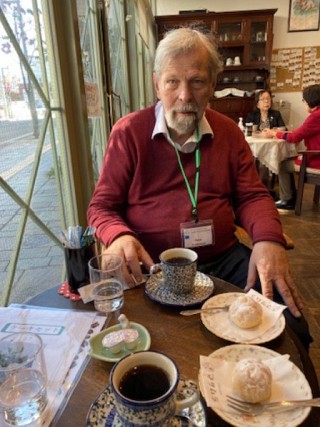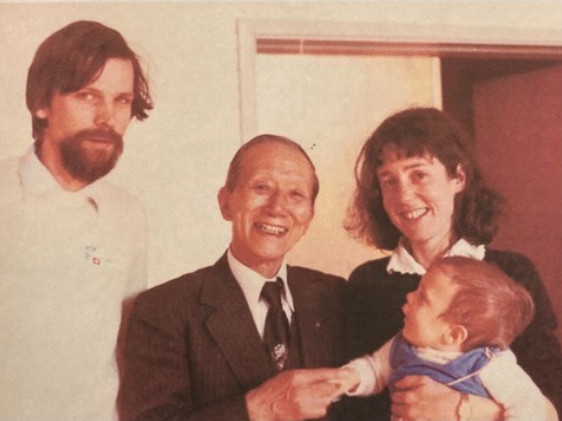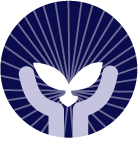Peter Rüttimann

Peter Rüttimann played a key role in establishing the Suzuki Method in German-speaking Switzerland. He was one of the founding members of the Suzuki Institute of Switzerland. As early as 1986, Peter Rüttimann, together with Marianna Rüttimann, organized the first Suzuki Summer Camp in Davos, an important milestone in the network of the Suzuki movement. One year after the summer camp—in 1987—the success of the camp contributed to the founding of the "Suzuki Association of German-speaking Switzerland," later renamed the Suzuki Association Lucerne-Zurich. This association, too, played a key role in spreading the Suzuki philosophy in the region. Later, he was again involved in organizing the 5th National Suzuki Workshop in Lucerne in 2002.
Place lived since Japan: Switzerland
Instruments studied in Japan: Violin
Dates in Japan:
1972: “International experiment of living” before introduction to the Suzuki Method
summer of 1977: First trip to Matsumoto to study with Dr. Suzuki
Memories
It was in the early 70s when I was teaching at newly founded public music schools and realized that my students liked the songs and pieces in the “Suzuki Violin School” more than those from the traditional violin schools available. People always told me that the “Suzuki Violin School” was a nice collection of pieces but not more. Since I had already been in Japan in 1972 with the so-called “international experiment of living,” I could not possibly imagine that a Japanese pedagogue would call a simple selection of pieces a “violin school.” So, I became more interested and looked up “Suzuki Method” in the largest music encyclopedia available in the library. I was fascinated by what I was reading. There was even an address to which I wrote: Talent Education Institute in Katsumoto. Many weeks passed and I did not get any answer. So, I wrote to the Japanese embassy. They told me that there was no “Katsumoto,” but rather a city called “Matsumoto.” Immediately, I wrote a new letter and got an invitation from Mrs. Miasaka only three weeks later. That’s how the whole adventure started – with a printing mistake.
It was the Summer 1977 when I went to Matsumoto for the first time. The flight at that time was 36 hours and with two stop overs. I probably spent several monthly wages on that flight. I remember that arriving at the train station I was completely jet-lagged, and Mrs. Miasaka (later Kawakami) took me straight to Dr. Suzuki’s lesson. What I saw and heard completely changed everything. Never had I heard children playing on such a level. The way of teaching was totally different than the way we were used to teaching children here in Western Europe. And on top of that, many children were much younger than our students and played on a level which is hardly comparable to what we heard here.
Going through my notes almost 50 years later, one of the first words from every day’s lesson was: TONALIZATION. For me that was a very new concept. We worked hours and hours on bow holds and open strings, on resonance. As much influence as the teaching of Dr. Suzuki had, the encounter with Waltraud Suzuki was not of a lesser influence at all. Almost every day we met and discussed how to bring the Suzuki Method to Europe, especially to Switzerland and Germany, her country of origin. I believe that without her, the Suzuki movement would not exist the way it does now. When I left Matsumoto after the summer school, I thanked Mrs. Suzuki for everything but also expressed my concern about bringing the “Suzuki Method” to Europe. I was very skeptical. She said to me: “If you do it right, Suzuki Method can be taught all over the world. It depends only on you and how you do.” These words are still in my ears turning 80 soon.
Meeting Dr. Suzuki changed my life completely, and after coming home I started teaching the younger siblings of my students. When I brought the first sixteenth-size violin to a mother and said, “Let’s start,” she said, “You are crazy.” These first students, my experiment so to speak, all became professional musicians in the end. I was absolutely astonished by how quickly these children learned and how eager they were for their lessons – very different from my older “traditional” students. That’s how it started. In 1979 we all met at the first European Suzuki convention in Munich; and from that point onward, Dr. Suzuki came annually to Europe, each year visiting a different country. I attended most of these events and tried to learn as much as I could. Mostly, that was the way we spent the holidays with our family. When my own children started, I could see up close what joy it was for them to play together with so many children from so many different countries.
The first European I met in Matsumoto was Christophe Bossuat. We have stayed in touch ever since. Judy Boussuat, Allen Lieb, and many more were there. When the Matsumoto graduates started offering teacher training in Europe, it was clear to me that I should go to Lyon and learn more. But I did not much like leaving my young family alone, so my wife Marianna said she would come with me. The children went to their grandparents, and Marianna and I thought we could spend a nice weekend together. But again, it did not happen that way. Judy Bossuat said to Marianne that she should also study, and she gave her a violin. Marianne was not a professional but had played the violin as a child. So, we went to Lyon many weekends together and would even take the examinations, which in those years were a bit different from nowadays, from what I hear. I remember how nervous I was to play for Christophe. So was Marianna my wife. We recorded all those lessons and still watch them now. It is amazing to see how Marianna learned and played.
From those first moments together in Lyon, we dedicated our lives to developing the Suzuki Method here in Switzerland, starting a school in Lucerne and soon after in Zurich. When we started the school together in the early 80s, Marianne was a more consistent teacher than I was. I enjoyed the group lessons very much, and often my wife would do the Twinkle lessons she loved so much. I did the upper books, which in those years were books 2 and 3. The first time we played the Vivaldi A Minor in book 4, everybody was of the opinion that it was an extremely difficult and advanced piece to play – how times have changed over the years. We taught the first students at their homes. Later we rented small rooms here and there, and we always taught in the basement of our house. That is how our own children got interested. They saw all these children coming and going. Mostly, both of us were busy teaching, and Marianna also practiced with our children while I gave them the weekly lesson.
In 1986 we organized the first Suzuki workshop here in Davos, Switzerland with about 20 students participating. Thirty years later my children organized the European convention at the same place with almost 800 students. Also, in the 80s we had guests from Japan, a tour group. All was organized by fax in those days. When the Japanese students came and we played together after the formal welcome ceremony, I realized what the potential was with the Suzuki Method. My children have great memories of these events– also because they had the greatest possible freedom, as both their parents were busy with organizing and teaching.
Now seeing that all my children continue what we have built and developed in our school and seeing a lot of my former students bringing their own children and still playing – this all fills my heart with the greatest joy.
PR, May 2025
Photo in Matsumoto

Peter and Marianna Rüttimann, their son Martin, and Dr. Suzuki

